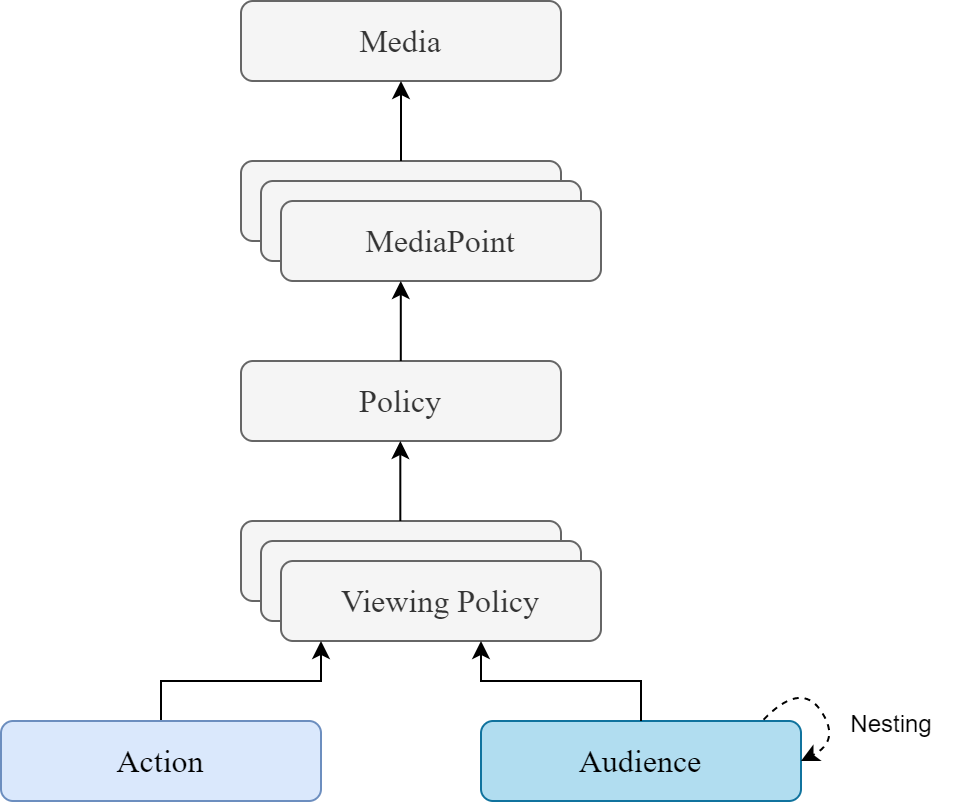SCTE 224 ESNI API
Some video streaming ecosystems are based on SCTE 224 standards. The SCTE 224 ESNI API is accessible through the following base endpoint: https://api.broadpeak.io/v1/esni (see API reference)
The following sections describe the parameters, fields, actions and audiences which are currently supported.
Data model
As a reminder, the following chart illustrates the data model used in ESNI SCTE 224.
It shows the relationships between the main objects normalized and specified in the standard.

Supported parameters
The following table displays the parameters that are currently supported:
| Parameter | Supported |
|---|---|
| Media | Yes |
| MediaPoint | Yes |
| MatchSignal | No |
| Remove | No |
| Apply | Yes |
| Policy | Yes |
| ViewingPolicy | Yes |
| Audience | Yes |
| Results | No |
| Audit | No |
Supported fields
The following table displays for each parameter the fields that are currently supported:
| Field | Media | MediaPoint | Apply | Policy | ViewingPolicy | Audience |
|---|---|---|---|---|---|---|
| @id | Yes | Yes | Yes | Yes | Yes | |
| @description | No | No | No | No | No | |
| @lastUpdated | No | No | No | No | No | |
| @xml:base | Yes | Yes | Yes | Yes | Yes | |
| @xlink:href | Yes | Yes | Yes | Yes | ||
| @effective | No | No | ||||
| @expires | No | No | ||||
| @matchTime | Yes | |||||
| @matchOffset | No | |||||
| @source | Yes | No | ||||
| @expectedDuration | Yes | |||||
| @order | No | |||||
| @reusable | No | |||||
| @duration | No | |||||
| @priority | No | |||||
| @match | No | |||||
| AltID | No | No | No | No | No | |
| Metadata | No | No | No | No | No | |
| Ext | No | No | No | No | No | |
| MediaPoint | Yes | |||||
| Remove | No | |||||
| Apply | Yes | |||||
| MatchSignal | No | |||||
| Policy | Yes | |||||
| ViewingPolicy | Yes | |||||
| Audience | Yes | No | ||||
| Any | Yes | Yes |
Supported action
The only supported action is action:Content
Supported audiences
The only supported audience element is audience:Zip.
An audience may be empty. In this case the end-user requests must include a "category" query parameter with a value that matches the audience id.
Updated 4 months ago
